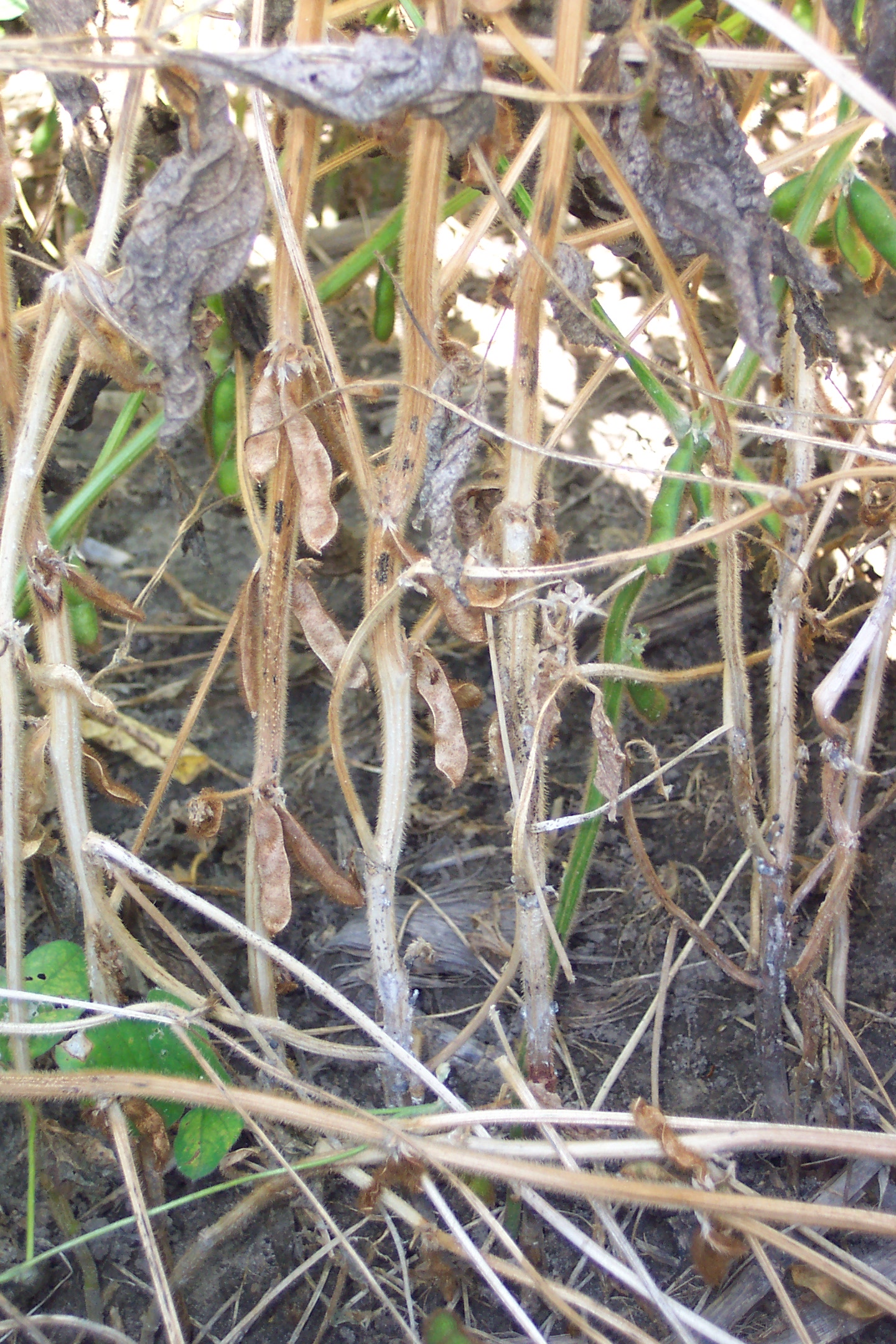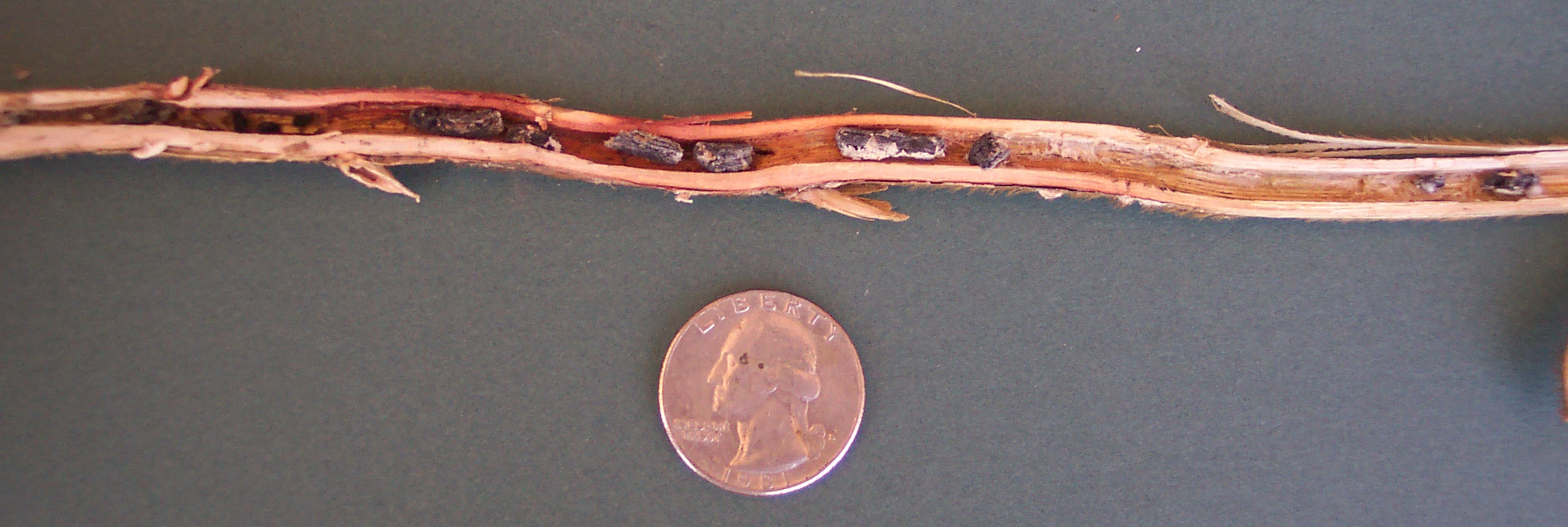By Loren Giesler, Extension Plant Pathologist
This is the third year in a row that growers in the northern half of Nebraska have seen white mold or sclerotinia stem rot develop to some degree in their fields. Prior to this period, we would have suggested this to be a less common disease. As weather patterns continue to be in flux, there is really no way to forecast whether 2016 will or won't be conducive for this disease.
One of the main problems with white mold management is that the disease starts earlier in the season during flowering. The actual infection occurs on the senescing flower, which is used by the fungus as a food source. All infections in soybean will therefore typically start at a node. You can even tell when the infection occurred based on how high up the plant the stem lesions and fungal growth are.
Integrated Management Plan
 Figure 1. Look for a white cottony fungal growth on the stems and often dark, black bodies (sclerotia) of the fungus on the stem to identify white mold.
Figure 1. Look for a white cottony fungal growth on the stems and often dark, black bodies (sclerotia) of the fungus on the stem to identify white mold.Planning management strategies for this disease will depend on how much you have and if it warrants action for the 2016 season. Consider these strategy components:
-
Variety Selection: As with most diseases, variety selection can help some, but with white mold there are not any really great varieties with resistance. Some are more tolerant, but this will not cure your problem for this disease.
-
Row Spacing: Narrow rows favor early canopy, which creates an environment that is conducive for infection. Try to use a 30-inch row spacing if your operation will allow for it.
-
Fungicides: Fungicide applications need to be applied during flowering to have any effect on this disease. The optimum temperature for growth of the fungus is 75 F. If temperatures are cool and conditions are wet, applications should be made at R1 to R2. In extreme cases, an application at beginning bloom and full bloom may be needed. Base this decision on the weather forecast at that time.
-
Lactophen. Over the years, research has shown that lactophen (i.e., Cobra) can help with white mold management. The problem is that an application during bloom will burn some of the flowers, so consider this during late vegetative stages prior to bloom.
- Irrigation: Avoid irrigation during flowering if at all possible. This can be more of a problem in sandy field sites.

Diagnosis and Resources
As with any disease, correct diagnosis is critical to management. If you are uncertain of the cause of damage in your field, have it identified at the UNL Plant & Pest Diagnostic Clinic.
More information on these and other soybean diseases can be found in the Soybean Disease Management section of CropWatch.





